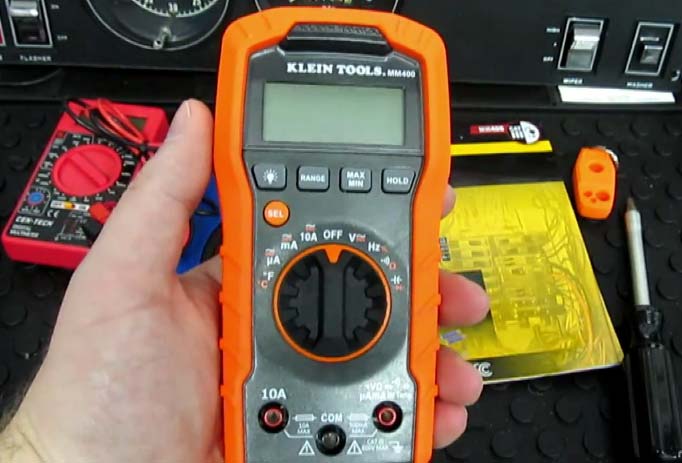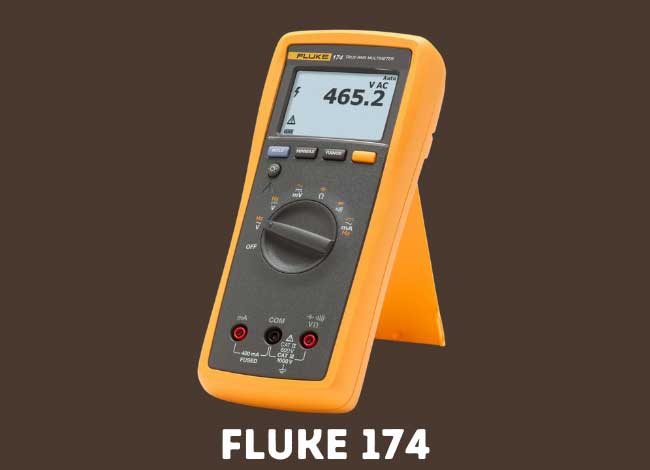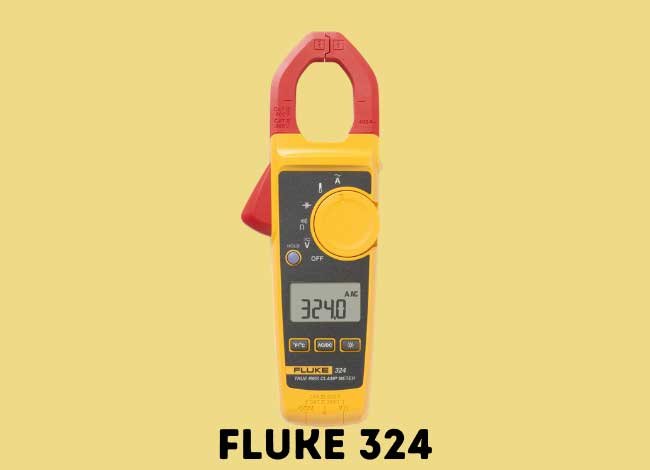Last Updated on February 13, 2025
Quickly diagnose electrical issues with the AstroAI AM33D Multimeter—offering precise voltage, resistance, and current measurements for effortless and efficient troubleshooting. Ideal for professionals and DIY enthusiasts seeking accuracy and reliability.
Astroai am33d multimeter: Is this worth it?
The AM33D multimeter has the ultimate adjustment abilities for its price tag. Let us look into some of the amazing features of the Astoria AM33D multimeter to make sure if it is worth buying or not.
- The most important aspect is that we can not deny that the Astoria am33d multimeter is one of the most economical versions of the multimeter that can serve really well without any hazards.
- The Astoria am33d multimeter has been equipped with so many outstanding features like the Intelligent Anti-burn gesture and Dual Fuse optimum solid fields.
- This device is so reliable and dynamic that it can handle all overloads and extreme pressure and maintain all load capacity ranges. This multimeter has a large digital display with a backlit LCD, making all the deliverables proper for a massive statement division. The sheer visibility has all the way to the compassionate light areas.
- This device has the biggest Open Support Stand with a gusty Protective Rubber Sigma. This multimeter needs a Built-in kickstand that always makes a weird sense of urgency. Protective rubber corner guards have a makeshift indolence against drop protection.
- The sheer accuracy and exaggerated continuity check to make a new and impactful hold button into vigorous standings.
How do I Personally use the Astoria AM33D multimeter?
The Astoria AM33D multimeter is so accurate that it can handle almost all kinds of loads. So here we describe all the possible methods for using the AstroAi AM33D multimeter.
Calculating the voltage
The most authentic part of a news teller or the multimeter is to calculate the voltage. Astroai am33d multimeter has all the tools to recognize all these calamities.
- The very first thing is to set up the Douglas mode V wavy line, which must be well-rehearsed with the AC voltage. There is always a straight line that can decide what needs to be done with the DC voltage junction.
- Then, Set the measuring Douglas effect button to the proper instinct. Then attach the red probe with port V. After the reprisal, you can attach the red probe to the side of the main component.
- For measuring voltage, attach the multimeter in parallel lines. Measure the voltage by Placing the multimeter in a proponent juncture and also perform each probe with the leads of the component. This listing of all conrads exceeds the domain of the free form.
- In the next stage, cross the COM probe with the big Conrad. The fuse component is arbitrary with the diffusion organization. Finally, Read the core value on the display and then compare the value with the main component scenario.
Calculating the Current
You need to have a solid series sharing current emoluments to calculate the Current. Always attach the multimeter in a series combination to the circuit. In the latest scenario, measure the Current with the backchannel flow.
The setup might reconcile all these statutes to adjust the multimeter in series. You need to boost the instinct to be in the same lead as a component.
On the next component, lead, retract the captive multimeter acting. After the gigantic auction leads these to the explosion ground, it rejuvenates the disconnection of the multimeter. If the circuit fails to work, then again, attach the hostile infringement. Plug in the red probe and make sure that this has been in the right port. The multimeter is always correlated with the circuit.
Finding the continuity of a device
The continuity has been on the detailed row if it gets a wide range of supplements relative to the electrical findings. There is always a very low resistance between the two points demands. We need to have a wholesome electrical connection that consists of a large number of continuous sound effects. The reading of this system has been less than a few ohms, so I always try to get a fast input organogram.
If there are no real implications, then it needs to be so compliant that the continuous implication makes it all the way to the testing facility connection. Most multimeters provide a single term of founding concentration. You need to test the continuity of the most exaggerated formulation as it gets too much revolving.
All the faulty wires may be running at the degression, and to some extent, it becomes so prosperous that the circuit gets disconnected. Select the functionality mode. The two points of inauguration make this the most precious of them all. Use a speaker, and the continuity of a wire becomes so impatient that it catches all the way to the probe to the wire toppings.
Finding out the resistance by Astroai AM33D
Using the AstroAI am33d for detecting the resistance of any device is so much more common as it gets intense with the actual measurement of the device. Let us have the full ways of how to use this device to calculate the resistance,
STEP-1
The test leads are the most crucial parts of the meter. Convulge all the needle or pointer scopings with analog meter management. The leftmost position has infinite resistance composition as it makes open-circuit propulsion. The path between the black and red probes remains the same, as it represents no continuity. Take the probes at the end of the line, as it always begins with the meter pointer.
STEP-2
Locate the Zero Adjust terminal after the confirmation of the far-sighted devaluation of the knobs. Rotate the digital meter screw and make a solid meter indication that is really close to the zero reading.
The settings must be set at a neutral ascending order and ensure that the reading downfalls within Ohms Resistance. Turn the meter on as it gets an intensive module when it gets a separate power switch. When a multimeter calculates the resistance in ohms, it affects the continuity as resistance and continuity are two different dimensions rather than the deal of continuity it claims. If you see little resistance, then have rough continuity assumptions within the measured resistance values.
STEP-3
In this stage, have an Ohm scale dialing to have a large and frequent top-most scale convergence. The optimum values that are highest according to the gadget get the most selected part on the retrieval settings. You can find decent flashings of glass-made structures on the left of the dial. Then Press the black probe if you feel that the readings are not up to the mark. The threaded basement lies within a precautionary settlement.
The red probe has been on the same page as it goes to the bottom of all the procuring deadlines. The listing has been in perfect and test-resisting revolutions, as it makes no underscore. The consistent manipulation makes a long-term zero effect degree, and thus it asserts the highest meter management.
STEP-4
The proper simulation of the probe makes a larger meter reading that squeezes all the probes. The round cartridge type makes no devaluation of testing older style glass. Values of resistance in any automotive fuse can resist all low-lying metal surfaces. The metal surface has been diagnosed with a metal band fuse, and thus it calculates the proper resistance. The fuse always measures an extra alternate path between the probes. The red and black probes must be attached with a proper channel to insert a wholesome value.
Troubleshooting tips to ensure accurate and safe usage:
-
Measuring Voltage:
- Set the rotary switch to the appropriate voltage setting (AC or DC) before taking measurements.
- Connect the red probe to the ‘V’ port and the black probe to the ‘COM’ port.
- Always measure voltage in parallel with the component or circuit.
-
Measuring Current:
- Switch the rotary dial to the correct current range (AC or DC).
- Insert the red probe into the appropriate current input port (often labeled with ‘A’ or ‘mA’) and the black probe into the ‘COM’ port.
- Connect the multimeter in series with the circuit to measure current flow.
-
Measuring Resistance and Continuity:
- Turn off power to the circuit before measuring resistance or continuity to prevent damage to the multimeter.
- Set the rotary switch to the resistance (Ω) or continuity setting.
- Place the probes across the component or section of the circuit to obtain a reading.
-
Safety Precautions:
- Exercise caution when measuring voltages above 60V DC or 30V AC RMS, as there is an increased risk of electric shock.
- Ensure the test leads are in good condition and properly connected to the multimeter.
- Avoid measuring voltage or current beyond the specified limits of the multimeter to prevent damage.
-
Fuse Replacement:
- If the multimeter stops measuring current, the internal fuse may need replacement.
- To test the fuse:
- Remove the test leads from the multimeter.
- Set the rotary switch to the 200mA range.
- Place the probes across the fuse; a good fuse will show a low resistance value.
For a visual guide on using the AstroAI AM33D multimeter, you might find this video helpful:
Ending notes
Astroai am33d is a great device for calculating several types of readings and is crucial for checking the condition of an electrical device. If you can properly use the AstroAI am33d, it will come with some fruitful values. So have a prudent check-out of this article to use this amazing multimeter successfully.
Frequently Asked Questions
How do I turn on the AstroAI AM33D multimeter?
-
- Turn the rotary dial to the desired function and insert the test leads into the appropriate ports. The display will turn on automatically.
How do I measure AC and DC voltage with the AstroAI AM33D?
-
- Set the dial to the appropriate AC or DC voltage range, connect the test leads to the circuit, and read the display.
Can I use the AstroAI AM33D to check continuity?
-
- Yes, turn the dial to the continuity mode (diode symbol), touch the probes together, and listen for a beep.
How do I test resistance with this multimeter?
-
- Set the dial to the resistance (Ω) setting, place the probes on both ends of the component, and read the display.
Does the AstroAI AM33D support auto-ranging?
-
- No, this is a manual-ranging multimeter, meaning you need to select the appropriate range for each measurement.
How do I measure current (amperage) using this device?
-
- Set the dial to the appropriate current range, connect the test leads in series with the circuit, and read the display.




